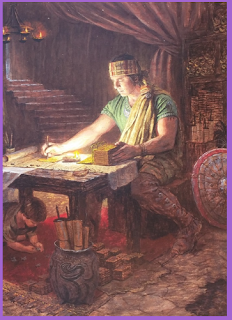The M2C intellectuals and their followers know their theory contradicts Letter VII. They also know Brigham Young and others taught explicitly that the depository was in the New York Cumorah.
M2C organizations such as Book of Mormon Central and FairMormon readily repudiate the teachings of the prophets about the New York Cumorah by claiming the prophets and apostles who discussed the New York Cumorah simply misled the Church by expressing their own opinions.
However, not many Church members realize that the M2C interpretation of Brigham Young’s teaching supports the position of critics of the Church who disbelieve everything about the Restoration.
_____
M2C scholars claim Brigham Young related a vision, not an actual experience.
The FairMormon explanation omits a critical part of President Young’s teaching, along with the historical context. This misleads Church members.
Here’s the link:
Here is the sentence that precedes President Young’s statement: “I lived right in the country where the plates were found from which the Book of Mormon was translated, and I know a great many things pertaining to that country.”‘
President Young was not talking about an imaginary or “visionary” hill somewhere in southern Mexico as FairMormon wants us to believe.
FairMormon explains it this way: “The geologic unlikelihood of a cave existing within the hill such as the one described suggests that the experience related by the various witnesses was most likely a vision, or a divine transportation to another locale (as with Nephi’s experience in 1 Nephi 11:1).”
Of course, no one said or implied that the depository was a natural cave. The M2C explanation that the experience must have been a vision repudiates Brigham Young’s testimony, as well as what others said, including Wilford Woodruff.
The M2C advocates cite Heber C. Kimball’s statement about a “vision” to justify their claim that the real Cumorah is in Mexico:
In response to a Brother Mills’s statement about the handcart pioneers, Heber C. Kimball said:
How does it compare with the vision that Joseph and others had, when they went into a cave in the hill Cumorah, and saw more records than ten men could carry? There were books piled up on tables, book upon book. Those records this people will yet have, if they accept of the Book of Mormon and observe its precepts, and keep the commandments.
Those of us who still believe the teachings of the prophets interpret this use of the term “vision” to mean a view or sight.
Consider this. If Kimball’s statement was a vision, what about Joseph’s statement about his experience with Martin Harris?
The M2C interpretation of Heber C. Kimball’s statement relegates Martin Harris’ experience as one of the Three Witnesses to a purely spiritual experience.
Which is exactly what critics such as the CES Letter also claim.
Source: About Central America
